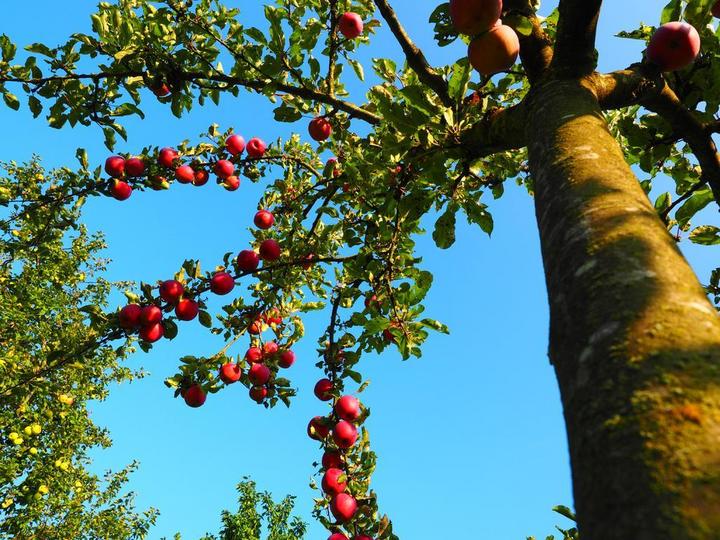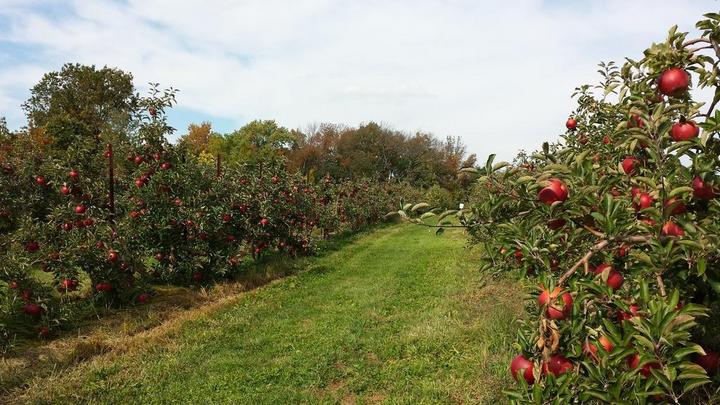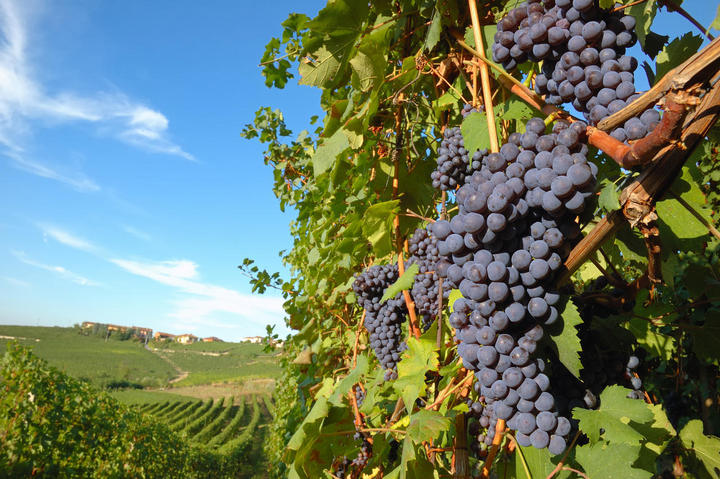


Smart agriculture refers to the use of information technology to intelligently control the entire industrial chain of agricultural production, operation, management, and service, achieving high-quality, efficient, safe, and controllable agricultural production. China attaches great importance to the development of smart agriculture, which is the only way to achieve modern agriculture.Agricultural big data covers a large amount of data generated throughout the entire chain of agricultural production, pre production, post production, and agricultural product processing and sales. At present, the cost of obtaining various agricultural data is relatively high, there is a lack of mature products, and different users have different needs. How to integrate biophysical and social information and provide corresponding information services for different stakeholders such as farmers, governments, and businesses remains a challenge to be addressed in the future.Intelligent decision-making is the core of smart agriculture and the process of generating value from data, covering various aspects of agricultural production, including pre production planning, in production planting management, and environmental control, as well as post production storage, processing, transportation, and sales.Pre production planning includes demand analysis and recommendation of planting plans;Planting management in production includes intelligent decision support for environmental regulation (for facility agriculture), fertilization, pesticide application, irrigation, and other aspects;The inventory control of postpartum agricultural products, the allocation of transportation vehicles, and the location selection of distribution processing and distribution centers all require intelligent calculation methods to provide decision support.The research on decision support technology for crop production management focuses on crop growth simulation and various expert systems.Crop management expert system is a specific application of expert systems in the field of agriculture. It generally includes a knowledge base composed of the experience, information, data, and achievements of authoritative agricultural experts, and can use its knowledge to simulate the thinking methods of agricultural experts in solving problems for judgment and inference, in order to obtain conclusions on solving agricultural production problems.As agriculture enters the era of big data, intelligent decision-making in agriculture has shifted to a big data-driven approach, which is reflected in various aspects of agricultural production. The algorithms and presentation methods of agricultural intelligent decision support systems need to be iterated accordingly. With the relative convenience of data acquisition and the widespread use of smartphones, agricultural expert systems, which were previously only available offline on computers and were criticized as “electronic dictionaries,” have ushered in a new era of development.Intelligent agricultural machinery and management software are the presentation form of information perception and intelligent decision-making.With the aging and decreasing number of agricultural professionals in China, the application of agricultural intelligent equipment is an inevitable trend. Agricultural intelligent equipment includes equipment that serves various operations such as fertilization, pesticide application, irrigation, pruning, picking, sowing, and environmental regulation.The intelligent agricultural machinery equipment abroad is relatively advanced and widely used, mainly with functions such as intelligent navigation, autonomous driving, variable fertilization, and variable spraying. With the increasing attention and investment of the country in the research and development of agricultural intelligent equipment, multiple institutions in China have conducted relevant research, including automatic navigation, variable rate fertilization, precise spraying, sowing, transplanting, spraying, weeding, and harvesting.In addition, China’s agricultural aviation operations have increased year by year, and the field of operations has gradually expanded. In addition to the application of drugs to food crops, horticultural crops, and cash crop, operations such as plant growth and pollination have also been carried out.The precise control technology of agricultural operation equipment has been developed in developed countries under large-scale mechanization conditions, while the environmental conditions of crop production regions in China vary greatly. Therefore, the selection of technology and equipment cannot be blindly applied. The development of precision agricultural mechanization that adapts to China’s national conditions must be continuously and gradually improved according to local conditions.With the development of intelligent technology, virtual agricultural systems similar to digital twins in industry are expected to gradually develop. Due to the characteristics of China’s small-scale agricultural economy, the asymmetry of production and sales information is a major bottleneck in agricultural development.Unlike traditional agricultural information systems that rely mainly on records, intelligent production scheduling and precise calculation of agricultural inputs, virtual agricultural management systems can be combined with new business models such as agricultural trusteeship and shared farmland, which not only meet the needs of urban residents for rural life, but also partially solve the problem of lack of technology and sales channels in rural areas, while creating new job opportunities in rural areas, Drive a new generation of young people to engage in agriculture.Smart agriculture refers to the use of information technology to intelligently control the entire industrial chain of agricultural production, operation, management, and service, achieving high-quality, efficient, safe, and controllable agricultural production. China attaches great importance to the development of smart agriculture, which is the only way to achieve modern agriculture.In the process of integration of the primary, secondary and tertiary industries, smart agriculture can break the information bottleneck and promote information flow and sharing.The technical framework of smart agriculture generally includes three aspects: information perception, intelligent decision-making, and decision implementation.Information perception includes obtaining various information related to agricultural production and operation, such as crops, soil and other environments, as well as information about people engaged in agricultural production and even society, through the Internet of Things in agriculture;Intelligent decision-making is like the brain, analyzing and processing various types of information, providing management or control solutions, such as expert systems;Decision implementation is based on the analysis results, including business strategies, planting plans, environmental regulation, or the operation of agricultural machinery (such as drones and seeders).Information perception and decision-making implementation often rely on hardware devices, while intelligent decision-making mainly involves the processing and calculation of data and knowledge. The current era of big data, cloud computing, and the Internet of Things has put forward higher requirements for intelligent decision-making.Big data is the foundation of smart agriculture, and information perception is the source of agricultural data.Narrowly speaking, agricultural data refers to biophysical information of crops themselves and the environment outside of humans. However, agricultural production activities cannot be separated from human activities, and the experience of producers themselves and the market formed by consumers will have an impact on production. Therefore, in a broad sense, agricultural data also includes social information such as people engaged in agricultural production, social environment, and market dynamics.Biophysical information perception includes spatial information perception and ground information perception.The former mainly includes remote sensing technology, satellite positioning technology, and geographic information technology (“3S” technology): based on remote sensing technology, spatial information such as planting area, crop growth, floods, pests and diseases, as well as soil and crop nutrition can be obtained; Based on satellite positioning technology, precise positioning of equipment can be obtained, which can be used for mobile positioning of agricultural machinery; Geographic information technology provides an intuitive way to manage data.The latter mainly refers to the sensing technology involved in the agricultural Internet of Things, which obtains data such as soil and air temperature and humidity, light intensity, carbon dioxide concentration, wind speed, soil salinity, etc. In addition, there are sensor technologies for rapid measurement of plant nutrients, soil fertility and agricultural product quality through visible/near infrared spectroscopy and near infrared spectroscopy.Ground perception also includes setting up cameras or infrared monitors in the field, which users can observe remotely to improve planting transparency and enhance consumer confidence. Low power consumption, low cost, and stable performance sensors are the key to obtaining reliable data in the long term, and are also the bottleneck in promoting the application of the agricultural Internet of Things.Social information perception includes aspects such as agricultural product market demand, agricultural product prices, agricultural policies, and grower experience. Currently, with the trend of international integration in the agricultural market, agricultural enterprises, associations, cooperatives and other economic cooperation organizations have a more urgent demand for market and technical information such as what kind of high efficiency agricultural materials are planted before production, what kind of high-quality agricultural materials are produced at high prices, and who is sold after production. This information is of great significance for the development of modern agriculture, especially large-scale agriculture, contract agriculture, and local characteristic agriculture in China.The demand information for agricultural products is the soul of the agricultural market. The main goal of perceiving social information is to conveniently and accurately capture market information, grasp market trends, and adjust production and sales directions in a timely manner. Automatic collection based on crawler technology is an important way to perceive market prices through the network, which can be used for weekly agricultural product price forecasting. The grain yield prediction model centered on input-occupied output technology considers various agricultural inputs that reflect social information.Data transmission is based on communication networks, connecting dispersed devices or subsystems with independent functions and communicating data according to specified network protocols, achieving the sharing of hardware and software resources in distributed systems and comprehensive management and control of the system.At the technical level, many domestic research institutes and companies can implement different transmission methods. The actual application of which data transmission method to use needs to be determined comprehensively based on factors such as farmland environment, scheme requirements, and cost constraints.Agricultural big data covers a large amount of data generated throughout the entire chain of agricultural production, pre production, post production, and agricultural product processing and sales. At present, the cost of obtaining various agricultural data is relatively high, there is a lack of mature products, and different users have different needs. How to integrate biophysical and social information and provide corresponding information services for different stakeholders such as farmers, governments, and businesses remains a challenge to be addressed in the future.Intelligent decision-making is the core of smart agriculture and the process of generating value from data, covering various aspects of agricultural production, including pre production planning, in production planting management, and environmental control, as well as post production storage, processing, transportation, and sales.Pre production planning includes demand analysis and recommendation of planting plans;Planting management in production includes intelligent decision support for environmental regulation (for facility agriculture), fertilization, pesticide application, irrigation, and other aspects;The inventory control of postpartum agricultural products, the allocation of transportation vehicles, and the location selection of distribution processing and distribution centers all require intelligent calculation methods to provide decision support.The research on decision support technology for crop production management focuses on crop growth simulation and various expert systems.Crop management expert system is a specific application of expert systems in the field of agriculture. It generally includes a knowledge base composed of the experience, information, data, and achievements of authoritative agricultural experts, and can use its knowledge to simulate the thinking methods of agricultural experts in solving problems for judgment and inference, in order to obtain conclusions on solving agricultural production problems.As agriculture enters the era of big data, intelligent decision-making in agriculture has shifted to a big data-driven approach, which is reflected in various aspects of agricultural production. The algorithms and presentation methods of agricultural intelligent decision support systems need to be iterated accordingly. With the relative convenience of data acquisition and the widespread use of smartphones, agricultural expert systems, which were previously only available offline on computers and were criticized as “electronic dictionaries,” have ushered in a new era of development.Intelligent agricultural machinery and management software are the presentation form of information perception and intelligent decision-making.With the aging and decreasing number of agricultural professionals in China, the application of agricultural intelligent equipment is an inevitable trend. Agricultural intelligent equipment includes equipment that serves various operations such as fertilization, pesticide application, irrigation, pruning, picking, sowing, and environmental regulation.The intelligent agricultural machinery equipment abroad is relatively advanced and widely used, mainly with functions such as intelligent navigation, autonomous driving, variable fertilization, and variable spraying. With the increasing attention and investment of the country in the research and development of agricultural intelligent equipment, multiple institutions in China have conducted relevant research, including automatic navigation, variable rate fertilization, precise spraying, sowing, transplanting, spraying, weeding, and harvesting.In addition, China’s agricultural aviation operations have increased year by year, and the field of operations has gradually expanded. In addition to the application of drugs to food crops, horticultural crops, and cash crop, operations such as plant growth and pollination have also been carried out.The precise control technology of agricultural operation equipment has been developed in developed countries under large-scale mechanization conditions, while the environmental conditions of crop production regions in China vary greatly. Therefore, the selection of technology and equipment cannot be blindly applied. The development of precision agricultural mechanization that adapts to China’s national conditions must be continuously and gradually improved according to local conditions.With the development of intelligent technology, virtual agricultural systems similar to digital twins in industry are expected to gradually develop. Due to the characteristics of China’s small-scale agricultural economy, the asymmetry of production and sales information is a major bottleneck in agricultural development.Unlike traditional agricultural information systems that rely mainly on records, intelligent production scheduling and precise calculation of agricultural inputs, virtual agricultural management systems can be combined with new business models such as agricultural trusteeship and shared farmland, which not only meet the needs of urban residents for rural life, but also partially solve the problem of lack of technology and sales channels in rural areas, while creating new job opportunities in rural areas, Drive a new generation of young people to engage in agriculture.

No reply content